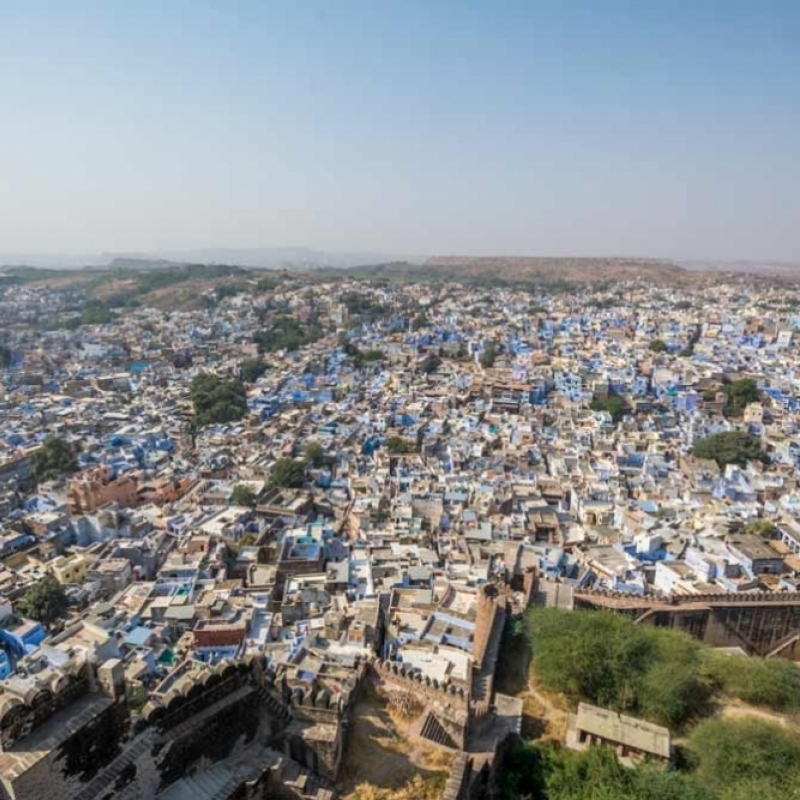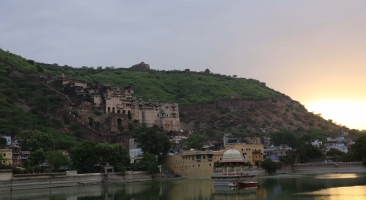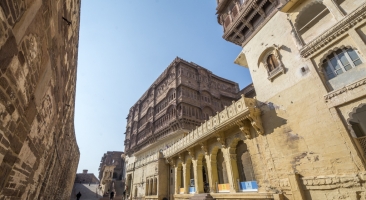Between the rugged Aravalli Mountains and the parched desert landscape of the Thar lies the region of Marwar in present-day Rajasthan. This largely arid swathe of scrubland with a few sturdy trees came to be the home for numerous pastoral communities that reared camels, cattle, goats and sheep. In this desert frontier region, many pastoralists coexisted with the small sedentary communities that practised agriculture, largely growing millets fed on the scanty dew, deep wells and the scattered showers. The Ahirs and the Gujjars, the dominant pastoralist group in this region, soon came under the sway of the imperial Pratiharas located in Kannauj. Inscriptional evidence found on royal pillars or sthambs as well as stray Brahminical and Jain temples in Osian (located roughly 70 km away from present-day Jodhpur) in between eighth and eleventh centuries CE suggest that this region was largely within the sphere of influence of the Gurjara–Pratiharas that lasted until the invasion of Mahmud of Ghazni in the early years of the eleventh century. The invasions led to large-scale political instability and the rise of numerous factions, especially the Chauhanas, Paramaras and Chalukyas, fighting to fill the power vacuum in this region.
In this political economy of Rajasthan, water bodies occupied the centre stage for the communities that used them. Ordinary wells (kua and bera) being easier to construct were built by most segments of the society to cater to their own communities. But the construction of large man made tanks and lakes, which required large-scale mobilisation of materials and labour, was usually undertaken by the elite. Among the prime patrons of such expensive constructions were royalty and nobility. To their patrons, the construction of stepped wells and ponds, like the construction of temples, was a charitable act that earned them religious merit and the affection of their subjects and community members. Even today in the dry climate of Rajasthan, quenching the thirst or hunger of people and animals is considered an act of great merit, superseding the conduct of religious rituals for private gain. The construction of large water bodies was also unmistakably an assertion of power—demonstrating the ability of a patron to command vast resources. The charitable acts of a patron were recorded for posterity in celebratory inscriptions on entryways of the waterbodies or on commemorative pillars (kirtistambh) erected at the site. The structures were often named after those who commissioned them; built to last several generations. A patron’s name was thus inscribed into the memory of a landscape and its people.
This module explores the urban history and water architecture of Jodhpur and examines how they came to shape the second most populous city of Rajasthan.



